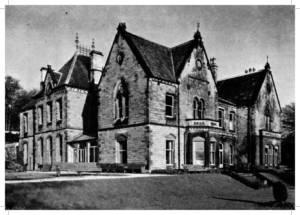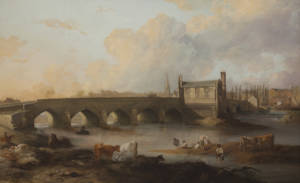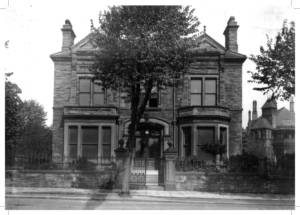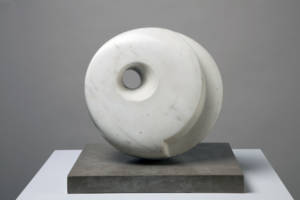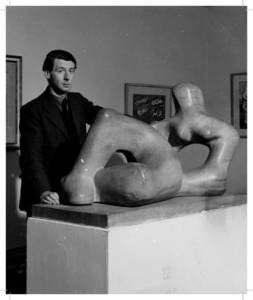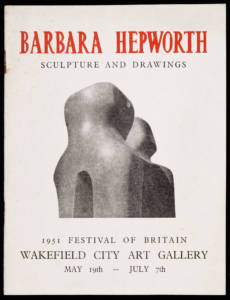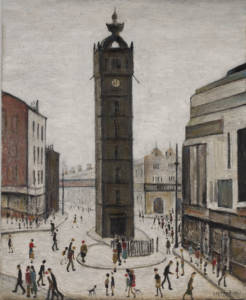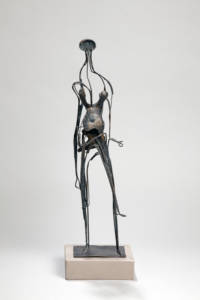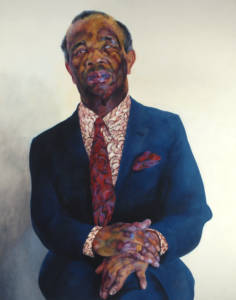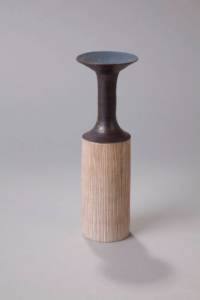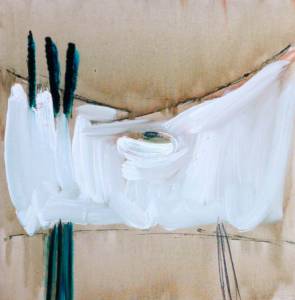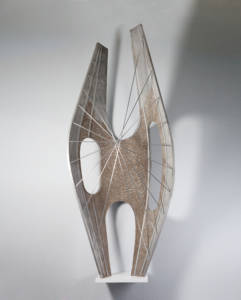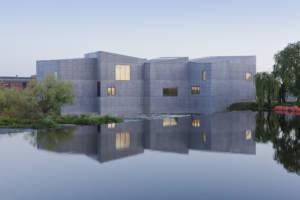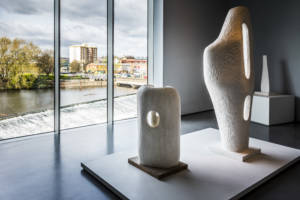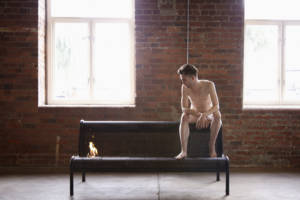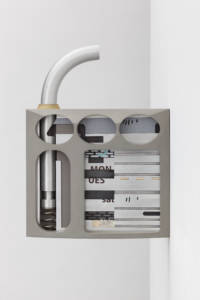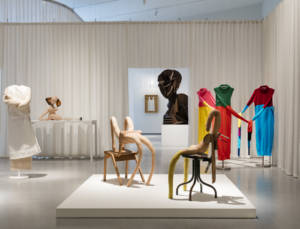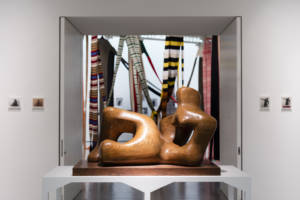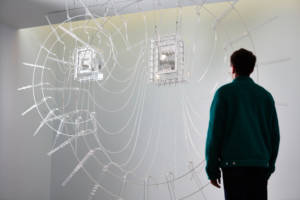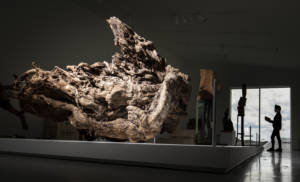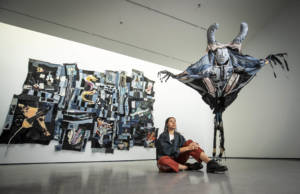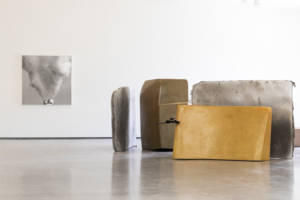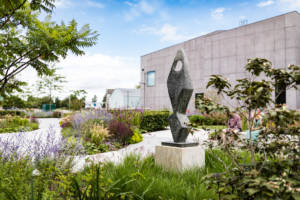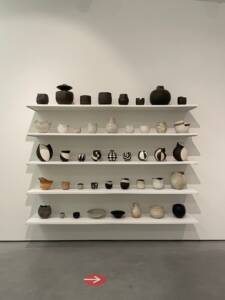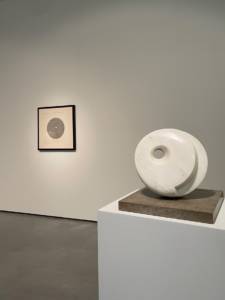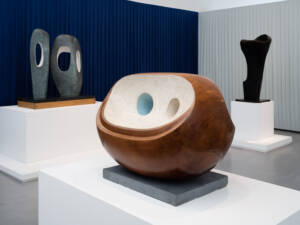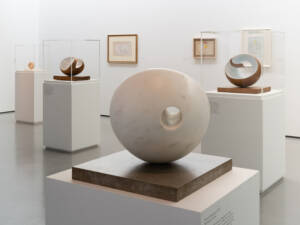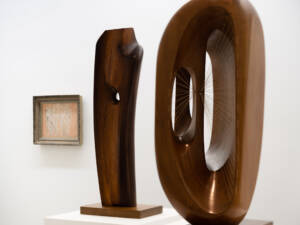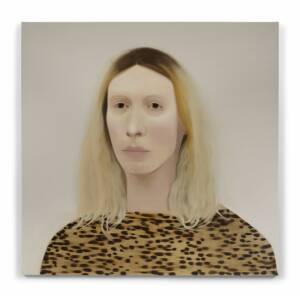
Timeline: 100 Years of Contemporary Art in Wakefield
Wakefield’s art collection was established in 1923 with the aim of nurturing an understanding of contemporary art and its relation to modern life – a collecting principle still followed by The Hepworth Wakefield today. The collection now comprises over 5,300 art works, built with the support of many organisations, communities and individuals who understand the importance of connecting people to contemporary experience through art.
Please click and drag left & right to scroll the timeline
-
- The Wakefield Permanent Art Fund is formed in order to develop the collection through acquisitions, gifts and loans.
-
- Ernest Musgrave initiates The West Riding Artists Association Exhibition which displays contemporary art made in Yorkshire. The tradition lasted into the 1950s and bolsters the gallery’s reputation for exhibiting contemporary emerging artists.
-
- Under the directorship of Musgrave, the first works by Barbara Hepworth - Pierced Hemisphere - and Henry Moore's Reclining Figure are acquired, alongside works by Roger Fry, Harold Gilman, Duncan Grant and John Piper.
-
- Wakefield Art Gallery presents Barbara Hepworth’s first solo show in a public gallery.
-
- Eric Westbrook, formerly Curator under Musgrave since 1934, takes over as Director. Musgrave becomes Director of Leeds City Art Gallery. Westbrook facilitates the first ever major Henry Moore retrospective in 1949, which then toured across Europe. In 1949, Westbrook leaves to work for the Arts Council of Great Britain.
-
- Helen Kapp, former Art Assistant to Frank Atkinson, becomes Director. Kapp makes large acquisitions of modern British art by Reg Butler, Prunella Clough, Alan Davie, Jacob Epstein, Josef Herman, Patrick Heron, L.S. Lowry and Keith Vaughan, as well as further works by Hepworth and Moore. She organises several exhibitions of emerging British artists as well as exhibitions of contemporary Italian, Polish and Dutch art.
-
- Kapp leaves Wakefield for Abbot Hall gallery in Kendal, and the proactive contemporary collecting policy wanes, save for an ongoing commitment to acquiring work by Hepworth and Moore.
-
- Wakefield Metropolitan District Council takes over the running of the gallery and in subsequent decades adds further contemporary art to the collection by Sir Peter Blake, Pat Douthwaite, Terry Frost, Maggi Hambling, Richard Hamilton, David Hockney, R.B. Kitaj, Eduardo Paolozzi, Joe Tilson and Euan Uglow. Holdings of contemporary ceramics and craft are strengthened with works by Hans Coper, Bernard Leach and Lucie Rie.
-
- Wakefield Art Gallery begins to use a new purpose-built exhibition space called The Elizabethan Exhibition Gallery where larger displays can take place including another Hepworth retrospective in 1985.
-
- The Hepworth Family Gift, a collection of 40 sculptures as well as drawings, lithographs and screenprints is given to Wakefield Metropolitan District Council by the Hepworth Estate, one of the key factors leading to the development of a new gallery - The Hepworth Wakefield.
-
- Wakefield Art Gallery closes to the public at Avenue House and responsibility for managing the fine art collection, owned by Wakefield Metropolitan District Council, is transferred to the staff of The Hepworth Wakefield as part of the development of the new organisation.
-
- The Hepworth Wakefield opens, designed by architect Sir David Chipperfield.
-
- The Calder, a new contemporary art space situated adjacent to the main gallery, opens. Located on the ground floor of a 19th century former textiles mill, this temporary art space showed work by artists including Roger Hiorns, Magali Reus and Toby Ziegler.
-
- The Hepworth Wakefield wins the Art Fund Museum of the Year award.
-
- Cerith Wyn Evans is awarded The Hepworth Prize for Sculpture for his important contribution to contemporary sculpture.
-
- The inaugural Yorkshire Sculpture International festival takes place at four partner venues: The Hepworth Wakefield, Henry Moore Institute, Leeds Art Gallery and Yorkshire Sculpture Park.
-
- The Hepworth Wakefield Garden, designed by internationally acclaimed landscape architect Tom Stuart-Smith, opens to the public. As well as Stuart-Smith’s distinctive planting, there are outdoor sculptures by Lynn Chadwick, Sir Michael Craig-Martin, Barbara Hepworth and Rebecca Warren.
-
- Vision and Reality: 100 Years of Contemporary Art in Wakefield opens.
-
- The Hepworth Wakefield holds the largest exhibition of Hepworth’s work since the artist's death, Barbara Hepworth: Art & Life, which opened on 21 May 2021, the gallery’s 10th birthday.
-
- Three new exhibitions open in January 2023, celebrating the breadth of Wakefield's collection and recognising the many organisations, communities and individuals who have supported the development of it.
